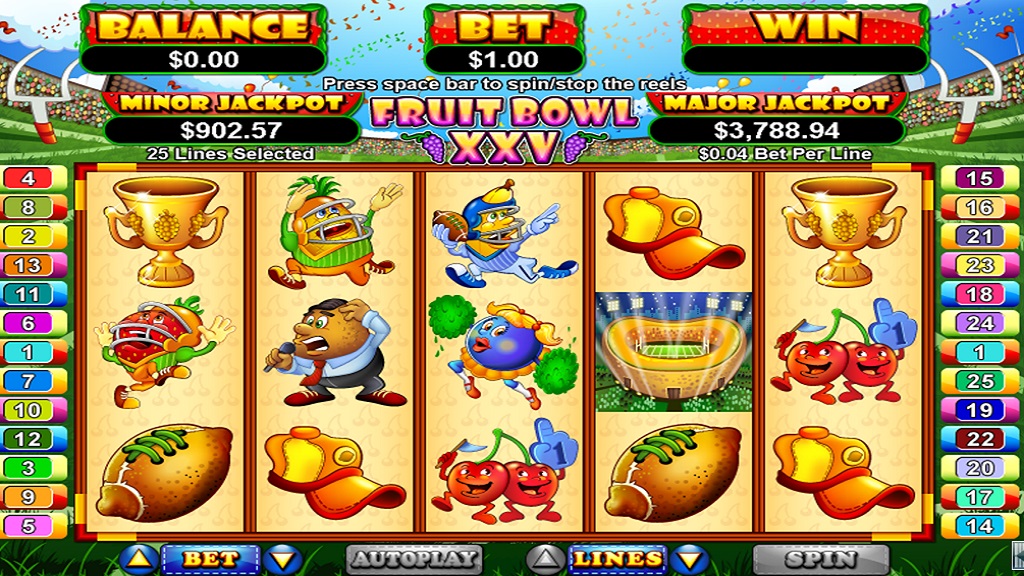
Imagine every spin could potentially make or destroy your entire bankroll. High-risk gaming brings the excitement rushing with its scarce yet substantial payouts, catering to those who enjoy living on the edge. In comparison, low-risk titles provide a consistent stream of minor wins, attractive to the careful player. Understanding these dynamics is crucial for taking advantage on your gaming plan and managing emotional responses. Ready to evaluate the risks and benefits of each method?
Key Points
- High risk games like Sugar Rush provide larger but rare wins, attracting risk-tolerant players.
- Low risk gaming ensures smaller, steady returns, attractive to cautious players looking for steady payouts.
- Medium risk offers a balanced risk-reward, suitable for players wanting moderate fluctuation in results.
- Strategic understanding of risk helps gamers manage bankroll and optimize returns.
- Consistent risk evaluation and reward evaluation aid in aligning gaming strategies with individual risk tolerance.
Understanding Fluctuation in Gaming
In the gaming world, understanding instability is crucial as it directly affects your overall encounter and tactics. Instability types define the rate and scale of wins and losses—elements that significantly shape your gaming trends. You’ll encounter high, medium, and low volatility games, each offering distinct obstacles and rewards. High variability promises larger wins but less frequent payouts, while low instability provides smaller yet consistent returns, allowing steady progression. Medium instability strikes a harmony, suiting players seeking moderate risk and reward.
Pay attention to how these variability types influence your gaming habits. By observing these trends, you can refine your strategies, optimizing potential results. Mastering the subtleties of volatility isn’t just about luck; it’s about leveraging understanding to enhance your gaming skill.
The Mechanics of High-Risk Gaming
When engaging in high-risk gaming, you need to understand the intricate balance between rewards and consequences, as it’s this balance that defines your overall game encounter. You’ll notice that game systems are heavily influenced by probability and outcome mechanics, presenting a landscape where calculated dangers can lead to substantial returns or significant defeats. By analyzing these elements carefully, you gain insights into how choices impact outcomes and can tailor your plans effectively for better consequences.
Rewards and Penalties Balance
Amidst the colorful chaos of high-risk gaming, understanding the balance between rewards and consequences is crucial for mastering Sugar Rush instability. You need to delve into the intricacies of reward systems and penalty frameworks. As a dedicated gamer, you’re aware that greater risks often promise bigger rewards. However, they’re closely tied to penalties that can swiftly offset your gains. Analyzing the dynamics of each game’s reward system becomes essential in predicting potential returns. Meanwhile, clearly defining penalty frameworks helps you gauge the potential deficits you might endure. By meticulously strategizing around these elements, you can turn the volatile landscape of Sugar Rush into an opportunity for growth. Your ability to weigh risks against rewards ultimately dictates your achievement in these electrifying scenarios.
Probability and Outcome Mechanics
How do you navigate the turbulent seas of high-risk gaming without getting swept away? Start by mastering probability principles, your compass through uncertainty’s currents. Probability theory offers you a structured way to predict outcomes by analyzing past events and calculating potential future occurrences. You gain insights into how likely an event is to happen, which is crucial when stakes are extremely high.
Outcome forecast becomes your map, guiding you through complicated scenarios. By comprehending potential results and associated probabilities, you make informed judgments, rather than relying on mere luck. This strategic foresight equips you to weigh risks and predict possible gains or losses. Focus on enhancing your ability to interpret patterns and data, ensuring you sail smoothly through the instability of high-risk gaming.
Exploring Low-Risk Strategies
Even though fluctuation can be daunting, exploring low-risk strategies can provide a stable path through varying markets. By focusing on low risk holdings, you can minimize potential losses while achieving steady returns. To effectively apply these strategies, prioritize understanding the basics of diversification. This involves spreading your investments across various asset classes to mitigate risks inherent in any single position. Bonds, dividend-paying stocks, and certain mutual funds serve as exemplars of such safe havens. Also, consistently reinvesting dividends can further amplify your portfolio’s growth over time without exposing it to severe downturns.
Always maintain a sharp eye on financial indicators and fiscal policies, as these influence even the safest opportunities. By blending caution with pitchbook.com knowledge, you stabilize your financial journey through the volatile sugar rush of market dynamics.
Risk Assessment: Weighing Your Options
As you strengthen your comprehension of low-risk tactics, it’s also important to emphasize on risk evaluation for more informed decision-making. Conducting a comprehensive risk evaluation will prepare you to discern the potential outcomes of each gaming option. The key lies in options evaluation, where you consider pros and drawbacks meticulously. Scrutinize each game’s factors: volatility levels, payout formats, and historical results. Investigate how these aspects align with your risk threshold. Focus on games offering reliable returns if you’re resistant to high stakes. Make a habit of reassessing your risk exposure consistently, adapting to shifting dynamics. Your goal in risk evaluation is to improve decision-making routes tailored to your strategy options, ensuring a more balanced balance between reward possibility and risk exposure.
Reward Patterns in High-Stakes Competition
Immersing into high-stakes play can be exciting, yet it needs a keen understanding of compensation dynamics to efficiently navigate the dangers. You must comprehend the high stakes dynamics that define this high-pressure gaming arena. Imagine balancing on a precipice; the rewards are considerable but so are the likely losses. Identifying reward thresholds is crucial. Set your targets with accuracy—consider not just the likely payoff, but the likelihood of reaching it. In high-stakes environments, rewards often reflect the volatility, meaning larger swings. Use historical data to predict patterns and set achievable goals. Knowing when profits justify the risks is key. Understanding these dynamics allows you to excel high-stakes play, enhancing your strategic approach and refining long-term success.
Managing Risks for Maximum Gain
To efficiently manage risks for greatest gain, you should first understand the different volatility levels, as they determine the potential swings in results. Strategic bankroll management becomes crucial, ensuring you’re prepared for varying risk conditions without overextending yourself. Timing your bets carefully can further improve your returns, as recognizing the most timely moments to engage can significantly affect overall success.
Understanding Volatility Levels
Comprehending instability levels is crucial for navigating the volatile terrain of economic markets. You’re not just focusing at large or little price changes but evaluating diverse volatility types. Some investments exhibit elevated volatility, characterized by swift price changes and increased potential returns or setbacks. Others demonstrate minimal volatility, offering stability and modest returns. Acknowledging volatility types lets you synchronize your approach with risk appetites. Pay attention to risk indicators—metrics like beta, variance, and typical deviation—to assess asset behavior. An asset’s beta, for example, shows its sensitivity to market shifts, guiding you on potential risks. By grasping these aspects, you can develop strategies that balance risk and reward successfully, maximizing gains by deliberately picking when and how to interact with volatile markets.
Strategic Funds Management
While handling your funds, comprehending its essential role in risk management is important for maximizing returns in volatile markets. A carefully designed strategy entails assessing your hazard tolerance and diversifying your capital appropriately. This approach secures you’re not investing all your resources in one basket, which is critical in risky environments. By allocating minor portions of your capital across different options, you safeguard against devastating losses while taking advantage on potential upswings. Analyze your financial goals and hazard appetite, then adapt your strategy to fit this system. Consistently reassess your diversification tactics and change them based on performance metrics and economic fluctuations. Remember, maintaining a careful balance between hazard and gain is paramount to improving returns and achieving long-term success.
Timing Your Bets Wisely
When should you place your bets to balance risk and enhance return in volatile markets? Recognizing placement patterns is critical. You’ll need to watch market movements and find ideal moments for action. These trends, if learned, reveal when a increase or drop is forthcoming. Calculated pauses are just as important. Holding patiently when doubt reigns can prevent hasty losses. It’s about discovering the crossroad between intuition and data, reducing hastiness.
Consider a disciplined approach where you review your betting tactics periodically. This creates an setting of informed judgments. Pause, assess, and only then proceed. Tracking historical data and behaviors will arm you with insights to forecast potential shifts. Embrace a attitude where bets are measured, not gambles, leveraging on learned patterns for maximized gains.
Choosing the Right Strategy for You
Selecting the right strategy involves matching your goals with market conditions and risk tolerance, ensuring you’re well-prepared for the erratic nature of sugar market fluctuations. Start by understanding your gaming preferences, as they dictate your approach. Are you inclined toward high-adrenaline, high-stakes gaming, or do you like the cautious, slow-burn options? Assess your risk tolerance: how secure are you with potential losses in pursuit of substantial gains?
Review current market trends, spotting patterns that align with your strategic preference. If you’re risk-averse, opt for strategies minimizing exposure, focusing on https://saveoursugar.eu/ gradual gains. Conversely, if you’re a thrill-seeker, bold plays with higher volatility might suit you. Always adjust based on evolving market dynamics, keeping your objectives clear and your emotional responses in control.
Enhancing Your Sugar Rush Adventure
As you create a tactic that aligns with your goals in the sugar market, it’s essential to shift your focus toward boosting your sugar rush experience for best results. The core of enhanced sugar rush experiences lies in precise gameplay enhancements, which can change your strategy. Consider adding these refined elements into your strategy:
- Customize Settings
- Leverage Analytics
- Upgrade Tools
These improvements not only improve your sugar rush experience but also set you to perform strategies with accuracy. Mastery demands attention to nuances, and these guidelines guide you towards improved, engaging gameplay journeys.
Frequently Asked Questions
What Elements Impact Fluctuation in Gambling Experiences Outside of Personal Influence?
You can’t manage gambling volatility elements like legislative policies and reward intervals. These factors significantly impact game dynamics, as strict regulations and fixed payout intervals can decide overall risk and reward levels, affecting your gaming results.
How Does Game Creation Influence Player Understanding of Threat?
Game design’s aesthetics and prize systems shape your risk perception. Bright visuals and regular winnings can create a low-risk illusion, while https://www.crunchbase.com/organization/gioco-digitale scarce rewards and difficult mechanics might project a higher risk, influencing your overall gaming experience.
